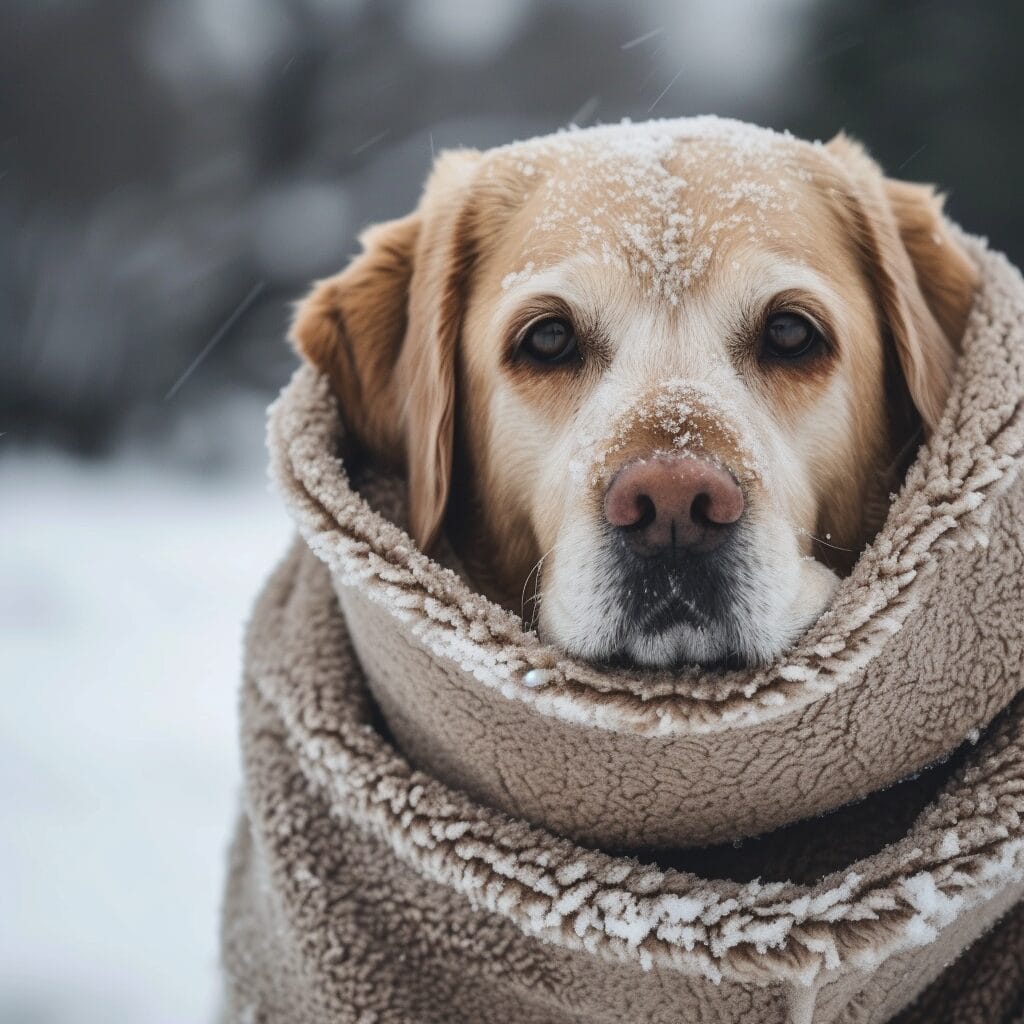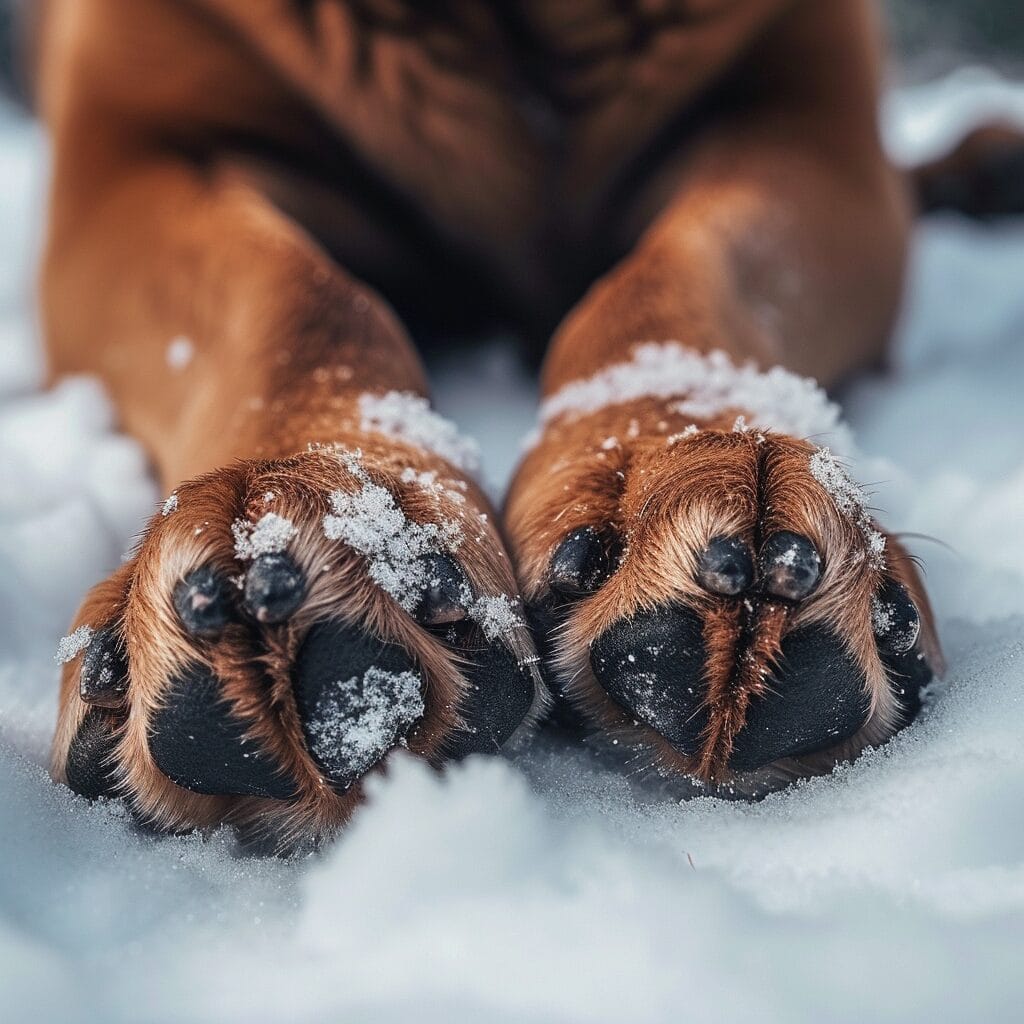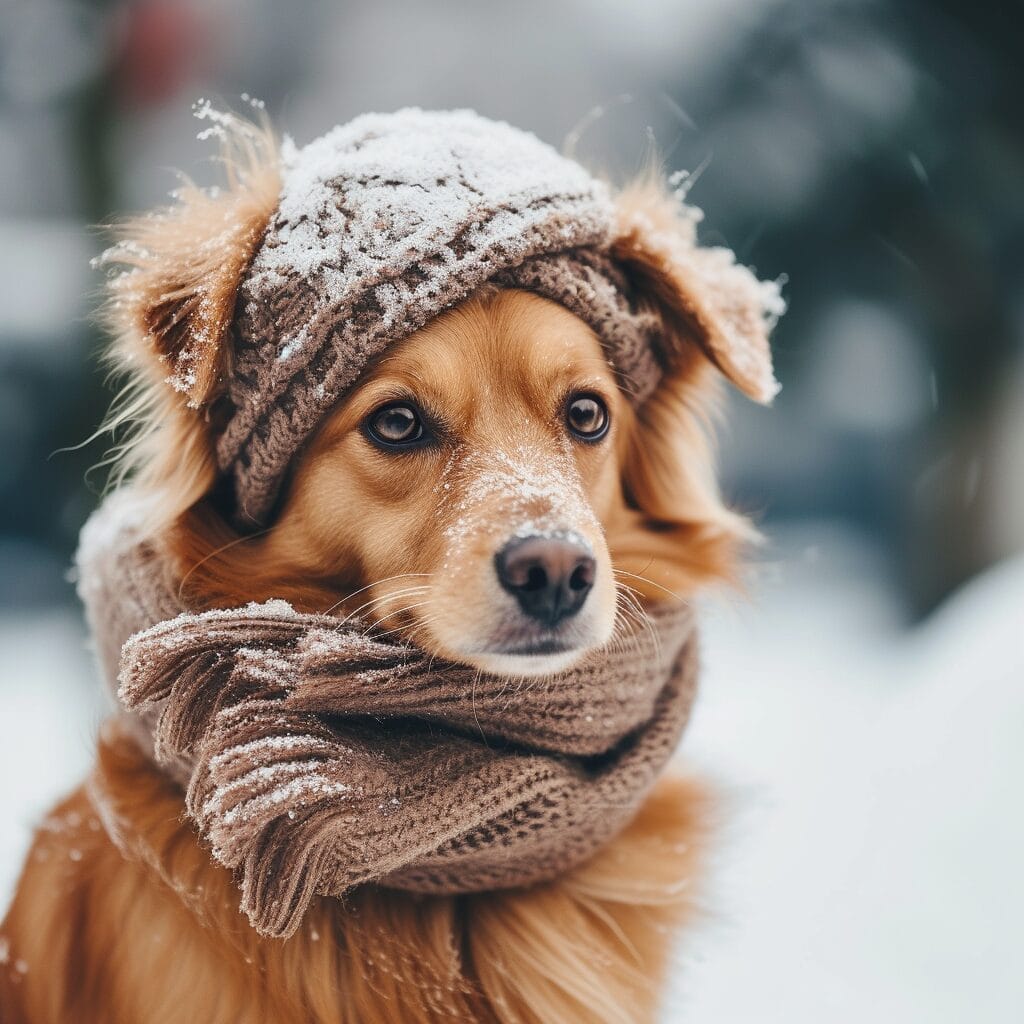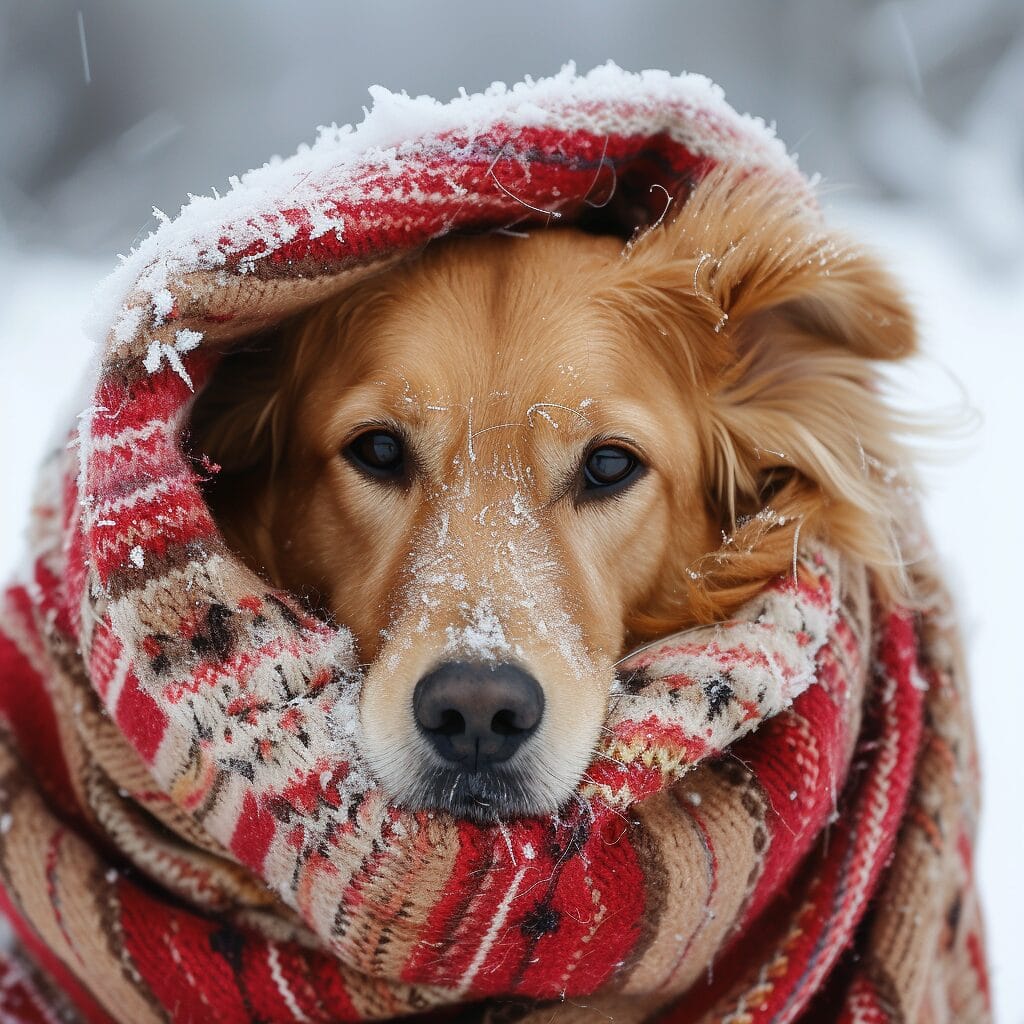When the temperature drops, it’s essential to consider your furry friend’s well-being before heading out for a walk. In fact, at temperatures below 45°F (7°C), certain breeds may find it uncomfortably chilly. As responsible pet owners, understanding when it’s too cold for your dog to venture outdoors is crucial in keeping them safe and healthy.
So, knowing the signs of when it’s too frigid for your pup can prevent any unnecessary risks. Let’s explore what temperature marks the limit for walking your canine companion and ensure their happiness during winter strolls.
What Temperature Is Too Cold to Walk a Dog?
Key Takeaways
- Protect Paws: Use dog booties or paw balms to shield your dog’s paws from ice, salt, and cold surfaces.
- Consider Dog Breed: Understand your dog’s breed and its cold tolerance level to provide appropriate protection and care.
- Provide Warmth: Invest in dog coats, sweaters, or blankets to keep your furry friend cozy during winter walks.
Determining the Temperature Threshold for Dog Walking

Outdoor Temperature Check
To determine what temperature is too cold to walk a dog, use a thermometer to measure the outdoor temperatures. The ideal range for walking dogs varies based on their size, breed, and coat thickness. For most dogs, temperatures below 45 degrees Fahrenheit can be uncomfortable.
It’s crucial to consider not just the air temperature, but also the wind chill factor. Even if it’s above freezing, strong winds can make it feel much colder. Dogs with short coats or those that are small or elderly are more sensitive to low temperatures.
Freezing Temperatures Caution
When temperatures drop below freezing (32 degrees Fahrenheit), extra caution is needed when taking your furry friend for a walk. Prolonged exposure to such cold conditions can lead to hypothermia in dogs. Signs of discomfort include shivering, lifting paws off the ground, or seeking warmth by curling up.
Cold Weather Guidelines for Dogs

Providing Shelter
Dogs should be kept indoors during cold weather to prevent frostbite and hypothermia. If outdoor time is necessary, provide a warm shelter with blankets or straw.
It’s crucial to create a cozy space protected from the elements where your furry friend can seek refuge when temperatures drop below what is comfortable for them.
Avoiding Extreme Cold Exposure
When considering whether it’s too cold to walk your dog, keep in mind that cold temperatures affect dogs differently based on their breed, size, and coat length. Short-haired breeds are more susceptible to cold than long-haired ones.
Avoid walking your dog in extreme cold, especially if there are strong winds or freezing rain. Instead, opt for shorter bathroom breaks outside and indoor playtime to keep them active without risking their health.
Dog Size and Cold Weather Considerations

Small Dogs
Small dogs, like Chihuahuas or Dachshunds, can feel the cold more intensely than larger breeds. Due to their size, they have less body mass to retain heat. When taking small dogs out in chilly weather, consider shorter walks to prevent them from getting too cold.
When it’s freezing outside, even a quick bathroom break may be all that some small dogs can handle. It’s essential to watch for signs of discomfort such as shivering or lifting their paws off the ground due to the cold.
Breed Characteristics
Different dog breeds have varying levels of tolerance for cold temperatures based on their genetics and characteristics. Breeds like Huskies or Saint Bernards are better suited for colder climates due to their thick fur coats and adaptations developed over generations.
On the other hand, breeds with short hair or little body fat may struggle more in low temperatures. For example, Greyhounds have thin skin and lack an undercoat making them susceptible to feeling colder faster compared to other breeds.
Pros:
- Understanding your dog’s breed-specific needs can help you tailor outdoor activities accordingly.
Cons:
- Ignoring your dog’s breed characteristics when exposing them to cold weather could lead to health issues like hypothermia or frostbite.
Signs of Cold Intolerance in Dogs

Recognizing Early Symptoms
Dogs display signs of cold intolerance through shivering or hesitancy to walk. These behaviors indicate discomfort. If your dog starts lifting its paws frequently, it might be too cold for them.
Some dogs are more sensitive to the cold, like smaller breeds with less fur. Signs can vary based on breed and size.
Protecting Your Dog from the Cold
To prevent issues related to walking a dog in extreme cold, consider using protective gear like coats or boots. Ensure your dog has a warm shelter outside if they spend extended periods there during colder months.
- Helps avoid health issues caused by exposure to extreme temperatures
- Allows for enjoyable walks even in chilly weather
Protecting Dog Paws from the Cold

Paw Protection
During cold walks, paw wax or booties can shield your furry friend’s paws from the icy ground. These products act as a barrier against frostbite and harmful substances like salt.
After strolls, it’s crucial to wipe your dog’s paws carefully. This simple step helps remove any lingering ice or salt that could cause discomfort or harm to their sensitive paw pads.
Fur Maintenance
Regularly trimming the fur between your pup’s paw pads is essential in preventing ice buildup during winter outings. By keeping this area tidy, you reduce the chances of frostbite and ensure a more comfortable walking experience for your four-legged companion.
Factors Affecting Dog’s Tolerance to Cold

Age and Cold Weather
Dogs’ ability to handle cold temperatures can vary based on their age. Young puppies and older dogs are more sensitive to the cold than adult dogs. Puppies have less body fat, making it harder for them to regulate their temperature in chilly weather. Similarly, senior dogs may struggle due to arthritis or other age-related health issues that make them more susceptible to the cold.
Puppies:
- Less body fat
- Struggle with temperature regulation
- Arthritis affects mobility
- Health issues increase sensitivity
Health Conditions Impact
Certain health conditions can decrease a dog’s tolerance for cold weather. Dogs suffering from illnesses like diabetes or hypothyroidism might find it challenging to stay warm when temperatures drop. These conditions affect their metabolism and ability to regulate body heat effectively, making them more vulnerable in colder climates.
Health Conditions:
- Diabetes hampers metabolism
- Hypothyroidism impairs heat regulation
Fur Thickness and Insulation
The thickness of a dog’s fur coat plays a crucial role in protecting them from the cold. Breeds with double coats, such as Siberian Huskies or Malamutes, have better insulation against low temperatures compared to breeds with single-layered coats like Greyhounds. The undercoat acts as an insulating layer that traps heat close to the skin, providing natural warmth during winter walks.
Winter Walk Precautions for Dogs

Safe Walking Routes
When considering what temperature is too cold to walk a dog, it’s crucial to choose safe walking routes. Opt for paths clear of ice and snow piles that could harm your furry friend’s paws. These obstacles can cause discomfort or injuries, especially in extreme cold.
To protect your dog from the bitter chill, keep walks brief when temperatures drop significantly. In freezing conditions, limit outdoor time to prevent your pet from getting too cold. Shorter walks reduce exposure to harsh weather elements and help maintain their body heat.
Signs of Discomfort
During winter strolls, pay close attention to any signs of discomfort your dog may exhibit. Watch out for behaviors like lifting their paws frequently or shivering excessively. These cues indicate that the temperature might be too low for them. If you notice these signs, consider heading back home promptly.
Keeping Dogs Warm in Cold Weather

Providing Indoor Comfort
Pet owners must ensure their dogs have cozy bedding indoors during cold weather. This helps keep them warm and comfortable. Dogs love running, but they also need a warm place to rest.
Dressing dogs in sweaters or coats provides added insulation when going outside in chilly temperatures. Puppies are especially vulnerable to the cold and may need extra layers for warmth. It’s like people wearing jackets on a cold day.
Using Heated Pet Mats
Heated pet mats can be beneficial for providing extra warmth, especially for older dogs or those with health issues. These mats mimic the heat of the sun, creating a cozy spot for pets to relax on during colder days. Imagine it as having your own heated blanket on a chilly night.
Importance of Dog Coats and Sweaters in Winter

Retaining Body Heat
Thin coats help dogs retain body heat during walks, especially in chilly weather. When the temperature drops significantly, dogs may struggle to stay warm, making coats essential for their well-being.
Dogs with short hair coat breeds are particularly vulnerable to cold temperatures. For them, sweaters play a crucial role in providing extra warmth and protection against the cold. Imagine going outside without a jacket on a freezing day – it’s uncomfortable and potentially harmful.
Properly fitting clothing is key to ensuring your dog’s comfort during winter outings. Ill-fitting coats or sweaters can cause discomfort or even restrict movement while walking. It’s like wearing shoes that are too tight – not fun at all!
Choosing the Right Fit
When selecting a coat or sweater for your furry friend, consider their size and breed characteristics. A snug but not tight fit is ideal – you want them to be cozy, not constricted! Look for adjustable straps or elastic bands that allow for flexibility as they move around.
One advantage of using thin coats is that they provide an extra layer of insulation without adding bulkiness. This way, your dog stays warm without feeling weighed down by heavy clothing during their outdoor adventures.
Understanding Dog Breeds with High Cold Tolerance

Understanding Cold Tolerance in Dogs
Dogs, like Huskies and Malamutes, have thick double coats that provide insulation against cold weather. These breeds are well-equipped to handle colder temperatures due to their natural ability to regulate body heat efficiently. Nordic breeds, such as the Samoyed or Norwegian Elkhound, were originally bred for snowy climates and have adapted over generations to thrive in harsh winter conditions. Working dogs like Bernese Mountain Dogs are also known for their high tolerance for colder temperatures.
Breeds with high cold tolerance usually exhibit specific physical characteristics that help them withstand low temperatures better than others. For example, Siberian Huskies possess a dense undercoat and longer guard hairs that protect them from extreme cold. Their paws even have fur between the toes for added insulation against icy surfaces. Similarly, Alaskan Malamutes feature a thick coat with an oily texture that acts as a water-resistant barrier in snowy environments.
Factors Influencing Safe Walking Temperatures
When determining if it’s too cold to walk your dog, consider various factors beyond just the breed of your pet. The temperature, wind chill, duration of exposure, and individual health conditions all play crucial roles in deciding whether it’s safe for your furry friend to go outside during chilly weather. As a general rule of thumb, if the temperature falls below freezing (32°F or 0°C), caution should be exercised when taking your dog out for walks.
While some dogs might enjoy romping around in snow-covered landscapes without any issues, others may find it uncomfortable or even dangerous due to the cold affecting their paws or overall well-being. It’s essential to monitor your dog’s behavior closely while outdoors in frigid conditions; signs of distress such as shivering excessively or lifting their paws frequently could indicate that it’s time to head back inside where it’s warm and cozy.
Final Remarks
You’ve learned how to keep your furry friend safe during those chilly walks. Remember, understanding your dog’s needs in cold weather is like putting on your own jacket before heading out in the frosty air. Pay attention to their signals and protect those paws like you’d shield your toes in boots. By following these guidelines, you’ll ensure your pup stays cozy and happy even when the temperatures drop.
Now, grab that leash, bundle up, and hit the winter wonderland with your canine companion by your side. Keep them warm, watch for signs of discomfort, and enjoy the snowy adventures together! Your dog will thank you with tail wags and endless love. Stay warm and keep those paws moving!
Frequently Asked Questions
What factors affect a dog’s tolerance to cold weather?
Dogs’ tolerance to cold depends on breed, size, coat thickness, age, and overall health. Smaller dogs or those with short fur may feel the cold more quickly than larger breeds with thick coats.
How can I protect my dog’s paws from the cold during winter walks?
Consider using paw wax or booties to protect your dog’s paws from ice, snow, and salt. After walks, rinse their paws to remove any harmful substances they might have picked up.
At what temperature is it too cold to walk a dog?
As a general rule of thumb, if the temperature falls below 20°F (-6°C), it is considered too cold for most dogs to be outside for extended periods. Always monitor your dog for signs of discomfort in colder temperatures.
Do all dogs need coats or sweaters in winter?
Not all dogs require coats or sweaters in winter. Breeds with thick double coats are naturally equipped for colder weather. However, smaller breeds with thin fur may benefit from wearing extra layers when going outside in chilly conditions.
How do I know if my dog is intolerant to the cold?
Watch out for signs such as shivering, lifting their paws off the ground frequently, whining while outdoors, seeking warmth excessively after coming inside, or displaying signs of discomfort like reluctance to go outside. If you notice these behaviors consistently in your pet during colder weather conditions – consult your vet.








